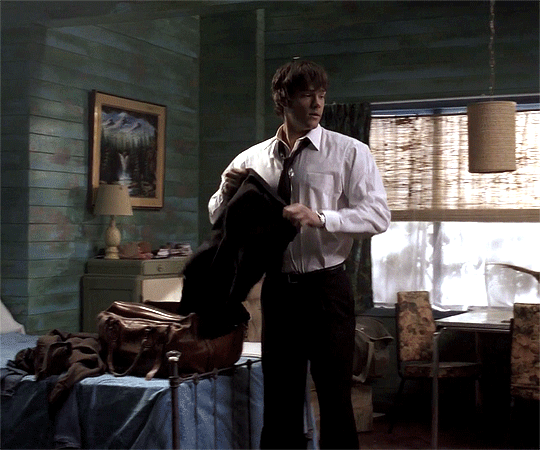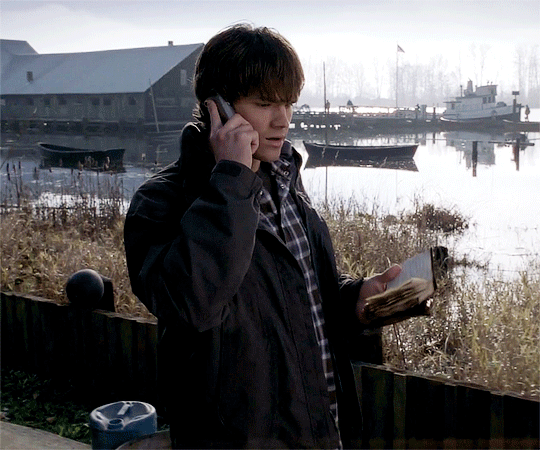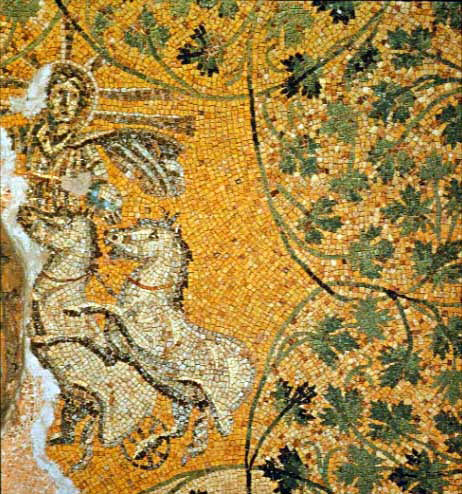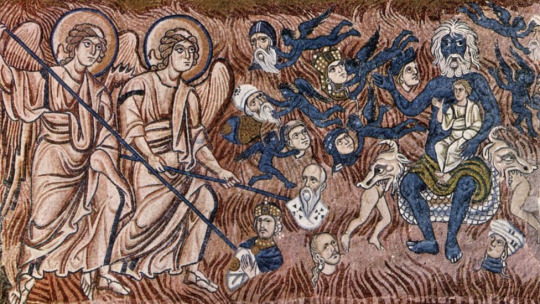#polycentrism
Text
YouTube ReVanced broke on my phone and I got tired of updating it, so I'm going to plug the Grayjay app I've had previously as a backup. Should've just switched to it sooner
No ads, allows background play, downloading, Subscription + Playlist import, and you get to keep your recommendations too.
Also supports multiple sites, even paid ones if you link your account. (Doesn't allow access to paid content you didn't pay for)
You should check the FAQ on their homepage for more info and download links.



#you can view the source#they support third party plugin development#technically not a free app. however you can use all the features indefinitely without paying#seems to have a new idea for hosting your identity online but i dont know if people will care for thar part#davepaste#that decouples your follower base from whatever platform#so if you're removed from YouTube for example; you lose your YouTube subscribers#but anyone following your polycentric id can see what you post across all linked platforms#so they wouldn't be lost#you can enable sponsorblock and return dislike in the settings#grayjay#YouTube
0 notes
Text
The Middle East as a Prototype for Polycentricity
In the modern world, the role of large centres of power and regional powers is growing, including many states in the Middle East: Turkey, Iran, Saudi Arabia, Egypt and Israel. In this complex configuration of interests and relationships, many countries are experiencing escalating conflicts with their neighbours and extra-regional forces. Some of the major powers are choosing a strategic path to…
View On WordPress
0 notes
Photo










Sam Winchester in every episode: Route 666 (1x13)
My life was so simple. Just school, exams, papers on polycentric cultural norms.
#supernatural#spn#Sam Winchester#spnedit#supernaturaledit#samwinchesteredit#spnsamwinchester#samineveryep#*#son boy
663 notes
·
View notes
Text















A Thousand Plateaus, Deleuze and Guattari // Ezri Dax
"Let us summarize the principal characteristics of a rhizome: unlike trees or their roots, the rhizome connects any point to any other point, and its traits are not necessarily linked to traits of the same nature; it brings into play very different regimes of signs, and even nonsign states. The rhizome is reducible neither to the One nor the multiple. It is not the One that becomes Two or even directly three, four, five, etc. It is not a multiple derived from the One, or to which One is added (n + 1). It is composed not of units but of dimensions, or rather directions in motion. It has neither beginning nor end, but always a middle (milieu) from which it grows and which it overspills. It constitutes linear multiplicities with n dimensions having neither subject nor object, which can be laid out on a plane of consistency, and from which the One is always subtracted (n - 1). When a multiplicity of this kind changes dimension, it necessarily changes in nature as well, undergoes a metamorphosis. Unlike a structure, which is defined by a set of points and positions, with binary relations between the points and biunivocal relationships between the positions, the rhizome is made only of lines: lines of segmentarity and stratification as its dimensions, and the line of flight or deterritorialization as the maximum dimension after which the multiplicity undergoes metamorphosis, changes in nature. These lines, or lineaments, should not be confused with lineages of the arborescent type, which are merely localizable linkages between points and positions. Unlike the tree, the rhizome is not the object of reproduction: neither external reproduction as image-tree nor internal reproduction as tree-structure. The rhizome is an antigenealogy. It is a short-term memory, or antimemory. The rhizome operates by variation, expansion, conquest, capture, offshoots. Unlike the graphic arts, drawing, or photography, unlike tracings, the rhizome pertains to a map that must be produced, con- structed, a map that is always detachable, connectable, reversible, modifiable, and has multiple entryways and exits and its own lines of flight. It is tracings that must be put on the map, not the opposite. In contrast to centered (even polycentric) systems with hierarchical modes of communication and preestablished paths, the rhizome is an acentered, nonhierarchical, nonsignifying system without a General and without an organizing memory or central automaton, defined solely by a circulation of states. What is at question in the rhizome is a relation to sexuality—but also to the animal, the vegetal, the world, politics, the book, things natural and artificial—that is totally different from the arborescent relation: all manner of "becomings.""
#hey i love her#ezri dax#ds9#star trek#i honestly. have SO many thoughts about her.#philosophy#she's a counselor so it makes sense to use the work of people who wrote “freud sees nothing” as part of their argument
47 notes
·
View notes
Text
The light of the hidden sun
An idea I fixate on sometimes is the esoteric mythological idea of the chthonic sun - that is, the sun in the underworld, most particularly in the sense of a dark double of the sun in the sky. In a Satanic context, that's reflected in the idea of Satan as the Sun, in the work of Aleister Crowley's presentation of Satan as the "spiritual sun". Here, though, I'll focus on a more Pagan meaning that ultimately connects to and undergirds the broader polycentric philosophy of Satanism and Paganism that I have. This is basically a long-winded expansion of my previous exploration of this idea via a Twitter thread yesterday.
It all starts out from an exploration of the seemingly rather paradoxical idea of Hades, the Greek god of the underworld par excellence, was also, in his own way, the sun. I remember stumbling on a Wordpress article about the idea, found it fascinating, but struggled to find support for it. Yet, more recently, I have come across something that perhaps lends support to the idea of the "solar Hades" being present within an actual Hellenic cultus, and with an attached theological context even.
In Leonard Thompson's "ISmyrna 753: Gods And The One God" (which you may find as part of a collection of essays titled Reading Religions in the Ancient World), we find a study of a particular funerary inscription that was discovered in 1875 at the Pagos Hill in Smyrna, an ancient Greek city located in what is now the Izmir Province in Turkiye. This inscription describes a sanctuary that was dedicated to numerous deities: Artemis, Helios Apollo, Zeus, Plouton Helios, Koure Selene, Men (an Anatolian god of the moon), and a divinity who seems to have been referred to as "God Himself". This is an interesting element, as it invites questions as to the identity of "God Himself", and the extent of its relationship to the broader "Western" monotheistic conception of God. The inscription is dated between the 1st and 2nd century, which may allow us to speculate about the possible influence of early Christianity or possibly some developments of Hellenistic Judaism that emerged at that time. However, the focus for me is the figure of Plouton Helios, who seems to be none other than Hades in solar form.
Plouton, you may remember, was one of the more polite names given to the god otherwise known as Hades. Hades may have occupied an incredibly important position as the lord of the dead, but he was not often worshipped directly or in name by the Greeks, who feared him because of his association with death. Even the name Hades was not often uttered because the god was seen as "most hateful to mortals", and so he was more often worshipped under different names. Plouton was one of them, and as Plouton he was worshipped as the lord of the fertility and mineral wealth that dwelled beneath the earth. So, then, Plouton Helios is to be understood as a distinct form of Hades, whose epithet surely denotes him as the sun. His consort, Koure Selene, is to be understood as an appearance of the goddess Kore, or Persephone, whose epithet denotes her as the moon.
In any case, Plouton Helios is contrasted with Helios Apollo; the former is an appearance of Plouton/Hades whose epithet is Helios, the latter is an appearance of Helios whose epithet is Apollo. Helios Apollo is perhaps meant to be understood as the daylight sun; both Helios and Apollo as standalone deities each tended to represent the sun and its light to some extent. By implication, then, Plouton Helios represents the sun in a different aspect. A similar contrast is established between Koure Selene and Artemis, in that Artemis is paired with Helios Apollo and, in that setting, she is pretty explicitly associated with the moon.
Plouton Helios as an expression of Hades is probably unique to Smyrna, but what is relevant for me is the meaning of Plouton Helios. According to Thompson, one interpretation, which is attributed to Porphyry and Heraclitus, suggests that Plouton and Kore represent the cycle of vegetation. In this interpretation, Plouton is the sun going down below the earth or around the lower hemisphere, drawing down the fertility of the seeds during the winter solstice or snatching up the shoots. In such a context, Plouton Helios and Koure Selene could have represented with that cycle of vegetation that then also resonated into broader themes pertaining to the cycle of life and death at large. But there's another meaning in play as well: the philosophical theme of the two suns.
Plutarch in On the E at Delphi discusses a theology that was ostensibly imparted to him by the philosopher Ammonius of Athens. This theology centres the god Apollo as a representative of Being itself, which is in turn represented by God, or rather "The One" ("The E"). In answer to the question "What is Being?", Ammonius says that "God", who is held to be eternal, uncreated, and incorruptible, is the sole source of Being, and that for this reason "God" is called Apollo or Apollon. This is supposedly because the name Apollo meant "denying the many", signifying the rejection or negation of multiplicity on behalf of the complete and ineffable unity of Being. But while Apollon was "The One", Plouton was "the many". Plouton, per Ammonius, was obscurity, darkness, and oblivion, whereas Apollon was clarity, light, and memory. Plouton, as Hades, was the realm of the unseen into which all beings pass upon their dissolution, while Apollon, as Helios, was the visible realm of embodied life. If the name Hades was meant to mean "invisible", "unseen" or "the unseen/invisible one", then this connotation makes perfect traditional sense.
It's hard not to escape a sense of the dualism that would later develop into Christian dualism. God, as "The One" and as Apollon, is unambiguously tied to Being, and simultaneously to light, memory, and the visible world, while Plouton/Hades, while not necessarily regarded as "evil", is presented as an antithesis to all of the traits that Ammonius affixes to his "God". Perhaps it is not entirely coincidental that Helios, as the sun god par excellence, would come to be syncretised with Jesus Christ as Christianity began to emerge in Rome, while Satan, in the medieval context, would increasingly take on a role contexutally and aesthetically similar to Hades.


But of course, there are ways to play with the theme presented by Plutarch via Ammonius. In Plutarch's context, Helios Apollo and Plouton Helios emerge as two suns: one sun is the visible sun, the celestial or diurnal sun, in this case representing the unity of Being, and the other sun is the invisible sun, the chthonic or nocturnal sun, in this case representing the unseen realm and the division and dissolution of Being. There are certain approaches to that idea that can be explored. For one thing, my mind found itself drawn to an ostensibly similar split in Kabbalah between Kether, the sefirot representing the primordial unity of God, and Thaumiel, its qliphothic counterpart representing the denial of this unity and, in its place, the counterveiling primordial division of will. Of course, for our purposes, that's where the similarity ends. Still another consideration is the broader pre-Christian landscape of underworld traditions, in which the underworld was not uncommonly imagined as a sort of surreal double of the living world rather than simply a bleak chamber of eternal punishment. However, the theme of the visible and invisible sun also has references with certain later ideas found within Neoplatonism.
In Against The Gallileans, the Roman emperor Flavius Claudius Julianus established that, per Neoplatonist parlance, there was both a visible sun and an invisible sun:
Plato gives the name gods to those that are visible, the sun and moon, the stars and the heavens, but these are only the likenesses of the invisible gods. The sun which is visible to our eyes is the likeness of the intelligible and invisible sun, and again the moon which is visible to our eyes and every one of the stars are likenesses of the intelligible.
This invisible sun would, in Platonist terms, be the Form of the sun that existed beyond the visible sun and underpinned its visible being within the handiwork of Plato's Demiurge. The "hidden sun" in Neoplatonic terms was, of course, Helios, who in Iamblichus' philosophy was also the Paternal Demiurge, and the principle of the noeric, that is to say the hidden. The invisble, in Neoplatonic terms, would refer to the noetic or noeric realms, different levels of the divine mind or intellect from which the visible world ultimately derives its source.
It may indeed be here that the fun begins. Some aspect of that premise can be flipped, where we are dealing with an invisble, underlying layer of reality, but instead it's what Jake Stratton-Kent called the deifying power of the underworld. It's the Darkness out from which light and everything else ultimately derives its source, and perhaps arguably, derives its dark quality from its invisibility from our standpoint. Perhaps, and this is something I've thought about, the black we thematically associate with darkness is similarly connected to experiential standpoint: black containing all possibilities, but we cannot see them. We have no idea might see beyond black, beyond the void when we close our eyes.
The hidden sun in this setting can denote the light of that pure reality, the illumination of the hidden principle that animates embodied life, and, in a certain way, makes it sacred as much as profane. Going down into the bottom of the earth and beholding that dark light, going down into the deifying power of the underworld in gnostic terms gives its own distinct spin to the basic core of Paganism in a way. Using Nietzsche's phrase "nature-idolatry" (by which he praised Goethe for embodying) here for a moment, by which we mean some extent of the worship of nature, the concept I speak to means taking "nature-idolatry" beyond the ordinary gratitude for the faculties of the visible natural world, and into a sort of gnostic appreciation for the whole of nature and the process of embodying it by acknowledging and embracing its true principle and power, the realization of which brings one towards the divine in its true basis and, as a result, affords freedom in the human condition.
In view of the mystagogical tradition of the mysteries and of goeteia, per Amir Ahmadi's examination in The Daēva Cult in the Gāthās, we may extrapolate that the ability to pass through or transgress the boundary between humanity and the gods through magical or occult means is essential to the kind of gnosis of which I speak, which is thus inevitably linked to katabasis: descent into the underworld, typically to realize a godlike afterlife. Thus we hear of the katabasis of Pythagoras, him "disappearing into Hades" by way of an underground chamber and then ritually re-emerging. Thus initiates of the Orphic mysteries must learn the geography of Hades and descend into the underworld to attain their place in the immortal company of the blessed. Empedocles apparently enacted his own form ritual katabasis and supposedly even Zoroaster went down into the underworld. The Greek Magical Papyri contains some fragments of a ritual wherein the practitioner must enter the underworld and then recite spells to protect oneself from hostile daimones, which is on its own very in line with Egyptian magic and particularly the spells meant to ensure the immortality of the pharaoh. Perhaps there is convergence with a much larger theme or tradition in ancient mysticism, where the point was to go down into the divine (perhaps even God!) rather than ascend up into it.
And, of course, I would argue that this is necessary because you cannot apprehend the light that lies below by which of the light of the visible sun: that is, the mundane perception of the mundane world cannot, by itself, penetrate into darkness from outside. It must descend, it must go down into the underworld. Profane illumination (per Walter Benjamin) must enable sight to tear through the normative perception of the world and into the realities it obscures. In the context of Hellenic or Hellenistic convention, Helios, and to some extent Apollo, cannot set foot into the underworld, the rays of the physical sun cannot shine in its darkness, and this must be understood to mean that the light of the mundane-phenomenal or normative consciousness that we abide ourselves in cannot, in itself, penetrate the underworld, and so we must darken ourselves. To follow darkness into the bottom of the earth, and see the hidden sun, whether we understand this as Satan or as Hades.

#paganism#hades#hellenic polytheism#neoplatonism#chthonic gods#the underworld#smyrna#sun#night sun#sun gods#gnosticism#satanism#left hand path#darkness#pluto#plouton#helios#apollo#ancient greece#chthonic
41 notes
·
View notes
Text
Great Idea 24: The polycentric region

Market and local government support for new urbanist values is rising and that is changing the planning mindset in many regions. Read more.
#great ideas#new urbanism#urban design#urbanism#cities#walkability#planning#regions#local government
2 notes
·
View notes
Note
oh okay that's interesting, thank you for the explanation. when my dad went to school in 60's/70's serbia that's the language they were taught, so i when i read that you speak srpskohrvatski it made me curious. it seems pretty obvious that it's a polycentric language but i didn't know, sorry about that. have a nice rest of the day
: )
It's still officialy one polycentric language, the curriculum is just like that
2 notes
·
View notes
Text
Deutschlandtakt
It's been in the news last week for stupid reasons, so I figure this is as good a time as any to talk about the biggest rail project in Germany since basically ever: The Deutschlandtakt (Germany clock-face timetable). This is a huge topic that touches and is touched by everything in the German railroading scene, and may end up being a prime example of how to do railroading right—or wrong, depending. It's very exciting!
To provide some basic context, Germany has a very dense rail network that is very heavily loaded (these days often overloaded). Since the 1980s, some rail lines were upgraded to higher speeds and some new dedicated high speed lines have been built. The latest opened in December 2022 (it's not yet complete though) with more currently in various planning phases. As mentioned in a previous post, Germany is very polycentric with lots of fairly big cities but no clear huge centre, so these lines go all over the place instead of all to Berlin or whatever.
To meet the political goal of doubling passenger numbers by 2030 (completely impossible, but it's good to have a goal to shoot for), we will need more tracks all over the place. So how do we decide where and most importantly how to build them? What should the targets be?
The approach in Germany so far has been a bit ad-hoc, despite these projects always taking decades. The plan was for the Berlin to Munich line to take three hours, but then the state of Thuringia complained, so now the line goes via Erfurt and the ride takes about four hours. A similar thing has happened earlier on the main north-south line with its stop in Göttingen.
A related question is how fast the trains should run. At first they decided 250 km/h (155 mph), then they went with 300 km/h (186 mph), then they went back to 250 km/h, and now we're leaning towards 300 km/h again. A side effect of that is that there are two types of high speed trains being introduced right now: The ICE 4, which runs at 250 km/h, and the ICE 3 (specifically the ICE 3neo, which is the fourth generation of trains called ICE 3), which is a bit newer and runs 300 km/h. This shows that we really need a useful, detailed long-term plan for how our rail network should look like. The Deutschlandtakt is this plan.
The approach chosen for the "Deutschlandtakt" is what gives it its name: We start with a timetable that we want to run. This will be a so-called clock face timetable, where every hour, the train to a particular destination will leave at the same time. E.g. the train to Berlin will always leave at, say x:03, for any value of x during the day. On busier routes, there may be a second train that leaves at x:33. And since all trains arrive shortly before the full hour and depart shortly after, you can easily change trains at major stations in any direction you like. Once we have planned this, then we build the rail network where you can run this timetable.
The idea of a clock face timetable isn't new, it's been the basis of the German long-distance rail network since 1979, with great success, and it's also used in all regional networks. What is new is starting with the timetable, and then using that as the basis for all future rail investment. This was pioneered in Switzerland, where this model has been used for decades with great success. Swiss experts are front and center in developing the German version of this as well. Using it in the much larger Germany is a whole new challenge, though.
Based on that timetable, you can then decide how fast trains should run; whether to stop in Erfurt; and many related things. This should also avoid problems like in Cologne and Frankfurt, which have a beautiful fast high speed line that is not used anywhere near enough, because while the line is nice, the stations at either end are always overloaded.
As of right now, this new proposed timetable isn't yet finished. It's easy to design a dream timetable, but designing something that can be implemented at a reasonable price and makes the most out of the money you do decide to spend is a difficult optimisation problem.
You can find a draft timetable here, though. I don't know how official it is; you can't find it on the overall fairly useless main Deutschlandtakt website. Reading this type of graphical plan is also difficult and takes a lot of getting used to (start with smaller stations before you try to understand what's happening in Berlin). But it does show that this thing is real. Real money is being spent on the planning stages, and this is the official government policy of both the current and the previous few governments. If you speak German, the summary here from the federal ministry for traffic and digital infrastructure is a really good overview as well.
The fundamental gist is: Lots more trains everywhere. 300 km/h does become the new default for Germany, though the timetable also gives the 250 km/h trains plenty of work to do. And along the way, yes, there will be new infrastructure for some heavily overloaded lines, e.g. from Hanover to Bielefeld and from Hanover to Hamburg. Not the biggest but perhaps the most impactful will be a tunnel in Frankfurt. Currently that major hub is a terminal station, where trains have to change directions. Allowing some long-distance trains to run through will mean they don't have to stop as long, and departing and arriving trains don't get in each other's way, which drastically increases the throughput of that station.
Along the way there are a lot of other challenges. A lot of the German rail network is not necessarily in a terrible state of repair, but very far from where it should be with very old technology (the place where I grew up still has signal boxes from 1906; they'll be replaced by the end of the year). Upgrading that should improve reliability and perhaps capacity, but it takes money, time and causes disruption until it's done, and this happens everywhere.
When it comes to construction, NIMBYs will be a major challenge. Every part of Germany is fairly densely settled; even in the rural parts you're rarely ever more than 2-3 km (about 2 miles) from the next village. The parts that aren't densely settled are now generally nature reserves. Building new high speed train lines will absolutely annoy some people no matter where you do it (more than motorways, weirdly enough, or maybe it's just that politicians are more willing to rubber-stamp motorways). People have been fighting the new line from Hanover to Hamburg, which doesn't yet have any specific route corridor, since the 1990s. It's become rather absurd, but getting into that would require a new post. The line from Hanover to Bielefeld, that should cut travel times from Berlin to basically anywhere west by half an hour, recently had their first public meetings. And during these, local initiatives shouted that if they don't drop the "half an hour" requirement, a key part of the Deutschlandtakt plan, then all the planners should be fired immediately. So this will be fun.
(Aside: Why does the additional capacity have to come from high speed lines? Basically, in our modern society, building railway lines has become immensely difficult, and often for good reasons. In the olden days, there were far fewer people, and it was much easier to destroy the homes of those who did live there if you wanted to. And if you took a piece of untouched nature and built a railroad over it, you were a hero of progress. Things have changed, generally for the better, but that means building a railway line is very hard because you have to make so many compromises. And you can only really do it far away from where people live, unless you build it entirely underground, which is far too expensive outside of big cities. In particular, adding tracks to existing lines means tearing down a lot of homes in cities, which is undesirable.
So you have to build the lines away from where people live, which means they're not useful for most local trains, only for long-distance and freight. Building a freight-only line is possible, but as the Netherlands have shown with their Betuweroute, it is not actually that much cheaper than building it so high speed passenger trains can use it as well during the day. Moving the long-distance trains to a new line means more space on the old tracks for local trains.
A related issue is why 300 km/h is better than 250 km/h. Yes, it is more expensive, especially in Germany where you have to slow down and stop fairly often compared to e.g. France, where you start in Paris and the first step is once you're half-way to the border. But the higher speed means the same train, and in particular the same train crew, can do more trips in a day and ultimately carry more people per day, which makes it cheaper in the long run.)
There are also a lot of criticisms about the plan itself. The plan does include space for freight trains, but freight railroads argue that it's not enough. Other people argue that while it's nice that this plan increases capacity, it probably does not increase it enough. There are also a lot of organisational issues that need to be hashed out, between things that are state responsibilities, federal responsibilities, and things that belong the various private, semi-private and publicly owned companies in the field.
The plan is neither finished nor perfect, and it will take a lot of money and a lot of politics to get it through. We'll see how it goes. Personally, though, I think it's a really good idea at its heart, and I hope it succeeds.
That leads us to the final question, the timeline. When will this all happen? The official date was 2030. Recently someone was (mis)quoted as saying 2070. Which is it?
I hope it's become clear, but this question doesn't really make sense. A big project like this isn't really done, nor does it even have a good start date (although I guarantee you there will be a ribbon cutting ceremony). A lot of organisational changes can be implemented fairly soon. Some of the required infrastructure is currently under construction and will long be finished by 2030. Other projects are in the earliest of planning phases, and will takes (as in, a single decade would be incredibly quick) until they open.
We will definitely see massive improvements by 2030, and I'm sure the government will call that the official start of the Deutschlandtakt. But we will see more improvements every year after that, hopefully, and for decades to come. I'm not sure where that 2070 figure comes from, but it's true that this will take more than a generation or two. And don't imagine that it will be done by 2070, because of course the target timetable won't be set in stone forever. As ridership increases and other things change, the target timetable will continue to be changed as well.
All in all, it's a really fascinating thing, but it will take a while before we see the benefits.
6 notes
·
View notes
Text
Putin's Foreign Minister Says Brazil and Russia Have Similar Views
Serguei Lavrov, for almost 20 years at the head of Russian diplomacy, goes to Brasilia on a trip criticized by Western allies

Russian Foreign Minister Serguei Lavrov said during a visit to Brasília, this Monday (17th), that Brazil and Russia have "similar approaches" to current issues. Without mentioning the Ukrainian War, Vladimir Putin's chief of diplomacy received a nod from his Brazilian counterpart, Mauro Vieira, who criticized the application of sanctions against Moscow.
"We talked about several relevant issues on the international and regional agenda, highlighting that Brazil's and Russia's approaches to issues happening in the world today are similar," said Lavrov. "The two countries are united by the desire to contribute to a more democratic and polycentric world order, based on the principle of sovereignty and equality of States."
Continue reading.
#brazil#politics#russia#russian politics#international politics#mod nise da silveira#image description in alt
4 notes
·
View notes
Note
I have an inherent lack of ability to literally dream (confirmed by sleep study while unaffected by any substances, as well as subjective experience) since childhood, and it really doesn’t affect my life much. I’m still capable of making creative works and coming up with new ideas to improve my life, but I grant I am fairly abnormal in other ways too, so it may have unfortunate effects on the average American even if it does not on me.
(re:)
You ever read Nancy Kress' Beggars books? Kinda surprised I've never heard about them around here, anyway a key premise is that with "designer baby" genetic engineering a thing, a modification is developed that kills off the need for sleep and also raises intelligence, and these "Sleepless" come to dominate society in the following generation.
Which becomes an early-90s meditation on what the productive members of society owe to the rest (the "Beggars in Spain" of the first title).
In the 2nd book, Beggars and Choosers, there's a group of further modified, hyperintelligent "SuperSleepless" that in retrospect are kinda an autism metaphor that create their own subculture, this is particularly the one the rat-adjs might be interested in, the small group gets charged with bread & circuses support of the entire rest of humanity but strike out to create their own society and struggle against legacy institutions
(In the 3rd book, Beggars Ride, they… drop syringes from the sky that somehow bind people into triads in some sort of thing about community, or polycentric society or something, it's really a tribute to SFF trilogy book deals)
Anyway at one point the SuperSleepless befriend an unmodified natural genius and his niche becomes to sleep, dream, and then compose multimedia concerts for the Sleepless of what it's like
3 notes
·
View notes
Photo








Supernatural Make Me Choose: anonymous asked season one Sam or season fifteen Sam?
Ah, my life was so simple. Just school, exams, papers on polycentric cultural norms.
#supernatural#spn#Sam Winchester#spnedit#supernaturaledit#samwinchesteredit#spnsamwinchester#mmc#*#my love my life my sun and stars
397 notes
·
View notes
Text
We're fast approaching the end of the liberal world order. The coming multipolar/polycentric world order will mean that the USA will no longer be the world's hegemony
1 note
·
View note
Text
BRICS+ 2.0: Toward A Polycentric World Order
BRICS+ 2.0: Toward A Polycentric World Order
(MENAFN– Asia Times)
The following is an interview with Yaroslav Lissovolik , a program director at the Valdai Discussion Club in Russia.
Adriel Kasonta: When it comes to regional cooperation in the Global South, traditional (Western) integration theories don’t seem to be giving justice to this non-Western phenomenon, especially when BRICS is concerned. Would you be so kind as to explain the…

View On WordPress
#Adriel#Club#director#discussion#Featured#floyd#following#free fire vs pubg#huawei p30 lite vs samsung a50#Interview#Lissovolik#look like#program#russia#Valdai#what time is it#with#Yaroslav
2 notes
·
View notes
